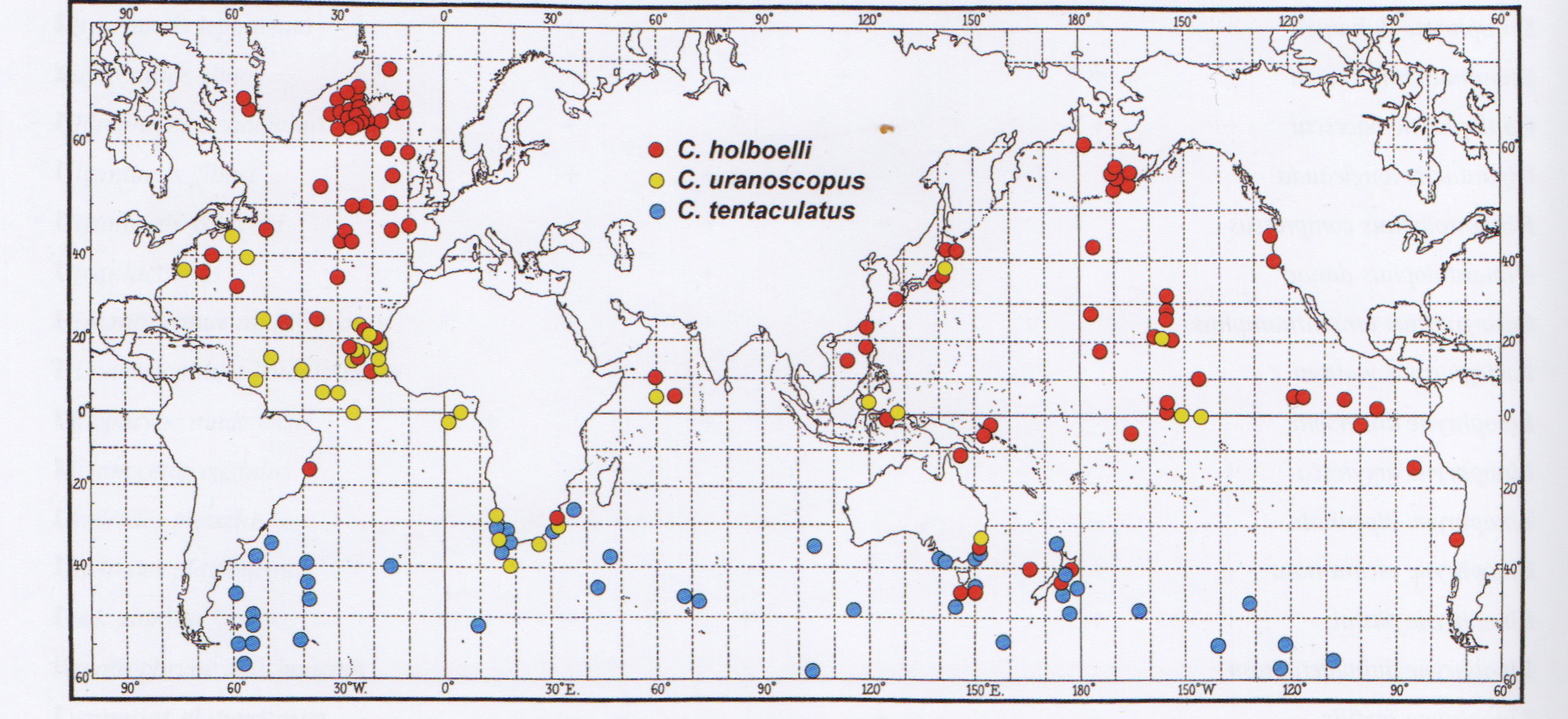Habitat
Most anglerfish are found in the great depths of the ocean,
but some species are found in shallow water. According to
Pietsch in his book Oceanic Anglerfish, C. holboelli
have been captured between 150-3400m below the surface. The
majority of specimens that have been captured were found between
400-2000m below the surface.
C. holboelli is present in all three major oceans. It
has been found as far north as the Greenland Sea above Iceland
and throughout the North Atlantic. Specimens have been collected
on both sides of the Pacific and all the way south to the
Central Atlantic. In the east, C. holboelli has been
recorded in the Peru-Chile Trench. This anglerfish is also
present in the Indian Ocean and the Arabian Sea (Pietsch, 1986).

Figure 209. Distribution of species of Ceratias: C. holboelli
(red), Atlantic, Pacific, and Indian oceans; C. uranoscopus
(yellow), Atlantic, Pacific, and Indian oceans; C. tentaculatus
(blue), Southern Ocean. A single symbol may indicate more than
one capture. Found in Pietsch, T.W. Oceanic anglerfishes:
extraordinary diversity in the deep sea. University of
California Press, Berkeley, California, USA.
Other organisms that live in the deep sea include species of
lobster and zoanthids. Various species of jellyfish and squid
can be found containing bioluminescent qualities. Deep-sea coral
species can also be found in the same habitat has the anglerfish (Ocean
Portal).
About 1,000m below the
surface, the ocean is pitch black. Because of the cold, dark
environment of the deep ocean, anglerfish have adapted a
bioluminescence
illicium. This illicium is used for a source of light and
also a feeding mechanism known as
luring (Anglerfish).
